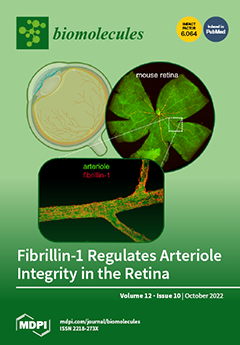New antifungals with unique modes of action are urgently needed to treat the increasing global burden of invasive fungal infections. The fungal inositol polyphosphate kinase (IPK) pathway, comprised of IPKs that convert IP
3 to IP
8, provides a promising new target
[...] Read more.
New antifungals with unique modes of action are urgently needed to treat the increasing global burden of invasive fungal infections. The fungal inositol polyphosphate kinase (IPK) pathway, comprised of IPKs that convert IP
3 to IP
8, provides a promising new target due to its impact on multiple, critical cellular functions and, unlike in mammalian cells, its lack of redundancy. Nearly all IPKs in the fungal pathway are essential for virulence, with IP
3-4 kinase (IP
3-4K) the most critical. The dibenzylaminopurine compound,
N2-(
m-trifluorobenzylamino)-
N6-(
p-nitrobenzylamino)purine (TNP), is a commercially available inhibitor of mammalian IPKs. The ability of TNP to be adapted as an inhibitor of fungal IP
3-4K has not been investigated. We purified IP
3-4K from the human pathogens,
Cryptococcus neoformans and
Candida albicans, and optimised enzyme and surface plasmon resonance (SPR) assays to determine the half inhibitory concentration (IC
50) and binding affinity (K
D), respectively, of TNP and 38 analogues. A novel chemical route was developed to efficiently prepare TNP analogues. TNP and its analogues demonstrated inhibition of recombinant IP
3-4K from
C. neoformans (
CnArg1) at low µM IC
50s, but not IP
3-4K from
C. albicans (
CaIpk2) and many analogues exhibited selectivity for
CnArg1 over the human equivalent,
HsIPMK. Our results provide a foundation for improving potency and selectivity of the TNP series for fungal IP
3-4K.
Full article






